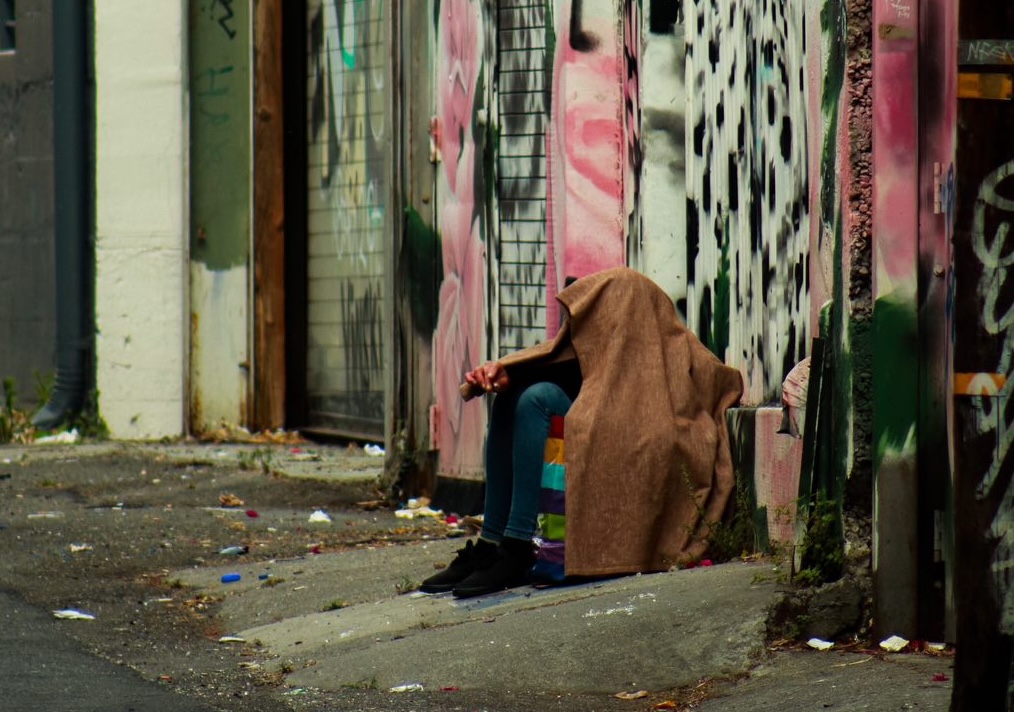Homelessness is more than just having unstable, unsafe, or dysfunctional housing. It comes with food insecurity, transportation issues, isolation, mental health consequences, threatened safety, and many other byproducts.
Homeless people are often stigmatized as “crazy,” which can even lead to them denying psychiatric care, according to a study in the American Journal of Psychiatry. However, few attempt to empathize with how housing instability can lead to declining mental health.
“If you’ve already had an existing mental health condition, there’s a huge risk of it getting worse,” Woo said. “When you’re experiencing homelessness, you are in a vulnerable state. You do not have safety, and your exposure to things that can be traumatic is increased multiple times over.”
That is why Woo attempts to help homeless youth regain their sense of confidence and sense of self, so they can reconnect to those around them.
“One thing that’s overlooked is helping youth rebuild their confidence in themselves and in other people. There’s a lot of internal struggle that they’re experiencing. Losing your housing can affect someone in a very fundamental way and so they’re trying to work through how to trust people, how to trust their community, and even maybe their family as well, if that was a part of the reason why they lost their housing,” Woo said.
Another negative association that haunts the homeless population is heavy drug use and laziness.
“The media says homeless people are lazy, that they don’t want to get up and get a job. But they don’t look at the mental health perspective. Homeless people, yes, they look like they might be on drugs, but you have to look at that and question, ‘Why? Why are they like that?’”
However, homeless people come from all backgrounds and conditions.
“I’ve met people who have PhDs or who had a family, but things happen that impact them, and a lot of people can hold judgment on those people,” Perry said. “Each person has a story. You can’t generalize a whole group or a population based on what you think.”
For some homeless people, selling drugs might be one of the few ways to survive.
“At first, I felt like I was alone, and then I found a group of teenagers that were out there selling drugs, stealing from stores, and selling things on the street to get by and just live. So I started hanging out with them, and they’re like, ‘Oh yeah, my mom, she doesn’t want me in the house either,’ ‘I haven’t been home in like, six months,’ ‘I haven’t been home in eight months.’ It was like, ‘Oh, wow, there’s a lot of other people in my same situation,’” said Bella Smith,* a recent high school graduate in San Francisco, who spent months on the streets.
While stories about homeless people committing acts of violence often receive much attention in the press, in reality, homeless people themselves are much more vulnerable to assault, with a study of homeless adults in San Francisco revealing that 32.3% of cisgender women, 27.1% of cisgender men, and 38.1% of transgender people reported sexual or physical assault within the previous year of the survey.
Smith recounts encountering a 54-year-old man while homeless, who offered to let her stay in a room in his house. Even though the offer was suspicious, Smith was in a desperate situation and went with him anyway.
“He was very abusive, very verbally abusive. He would keep me in his car and basically make me his little girlfriend. A lot of time passed and then he would constantly make sexual remarks,” Smith said, who was barely 18 at the time. “I didn’t leave after that, because I was just like, ‘Where am I gonna go?’”
However, an opportunity to escape presented itself when a woman noticed how Smith was being treated. She offered for Smith to stay with her and her sister, but that situation turned out to be toxic as well.
“She ends up being horribly weird too. One of her rules was that I couldn’t lock the bathroom door even while I was taking a shower or using the bath, or she was like, ‘I’ll punch you straight in your jaw,’” Smith said.
Smith was forced to leave that house as well after an incident of violence.
“I remember she came back, and I ran out the back fence to leave, but she wanted to fight me, so we fought, and it was a bunch of drama,” Smith said. “I was just feeling super hopeless.”
Youth surveyed by the San Francisco Department of Homelessness and Supportive Housing also reported facing various crimes in 2022.
According to the UCSF Benioff Homeless and Housing Initiative, sensationalizing these violent incidents can lead to the dehumanization of homeless people and the criminalization of being homeless by banning survival tactics like camping in public or sleeping on the street
“People need to not judge and instead, try to understand and do their research – there are so many articles out there about trauma, mental health, and homelessness. Because some people are fortunate, they don’t really have to understand since it’s not their problem, but if you just try to understand the problem, you’d have more compassion,” Perry said.






